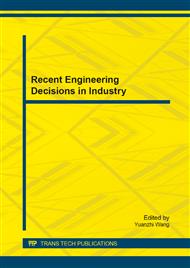p.3
p.8
p.14
p.19
p.24
p.30
p.36
p.45
p.51
Effect of Sintering Temperature Curve in Wick Manufactured for Loop Heat Pipe with Flat Evaporator
Abstract:
This paper specifically addresses the effect of the sintering temperature curve in manufacturing nickel powder capillary structure (wick) for a loop heat pipe (LHP) with flat evaporator. The sintering temperature curve is composed of three regions: a region of increasing temperature, a region of constant temperature, and a region of decreasing temperature. The most important region is the increasing temperature region, as the rate of temperature increase directly affects the performance of the wick.When the slope of the region of increasing temperature is 0.8 (equivalent to 8 OC/min), the structure of the manufactured wick is complete, with the best heat transfer performance result. Experimental resultsshowed that the optimal heat transfer performance is 160W, the minimal total thermal resistance is approximately 0.43OC/W, and the heat flux is 17W/cm2; the optimal wick manufactured has an effective pore radius of 5.2 μm, a permeability of 5.9×10-13m2, and a porosity of 64%.
Info:
Periodical:
Pages:
24-29
Citation:
Online since:
July 2014
Authors:
Price:
Сopyright:
© 2014 Trans Tech Publications Ltd. All Rights Reserved
Share:
Citation:


